14 Expensive Places to Retire That Are Worth It
Where you ultimately choose to retire doesn't always come down to dollars and cents.


Where you ultimately choose to retire doesn't always come down to dollars and cents. Indeed, the top reason people move in retirement is to be closer to family, according to a survey by Merrill Lynch and Age Wave, a research firm focused on the aging population. Or, rather than move, maybe you just want to stick where you're comfortable and familiar and retire in your home state. For whatever reason, you may wind up retiring in a place where the living costs can be relatively high.
But it can be worth it. We pinpointed one great retirement destination in each state, taking into account safety, median incomes and poverty rates for retirement-age residents, locals’ sense of well-being, and the availability of recreational and health care facilities, as well as living expenses. While the cost of living in each of these 14 retirement spots exceeds the national average by more than 7%, each offers plenty of attractive advantages for retirees in exchange for the higher price tag. Take a look to see if any of these pricey places to retire are worth fitting into your own budget.
Disclaimer
The list is ordered by cost of living, from lowest to highest. See "How We Picked the Best Places to Retire" at the end of the list for details on our data sources and methodology.

Pittsfield, Mass.
- City population: 43,289
- Share of population 65+: 19.0%
- Cost of living for retirees: 7.9% above the national average
- Average income for population 65+: $58,231
- Community score: n/a
- State's tax rating for retirees: Not Tax Friendly
New England is notoriously expensive, but Pittsfield, located in the western part of Massachusetts, offers a small pocket of relative affordability—more reasonably priced than Boston and Cambridge, where living costs are, respectively, 48.1% and 38.1% above the U.S. average. Housing is notably affordable: The median home value in the city is $173,200, compared with $407,400 for all of Massachusetts and $592,300 for Boston proper, according to Zillow.
Leaf peeping in the fall may be enough to draw you to the Berkshires. But you have plenty to enjoy all year round, including excellent sites for camping, fishing, hiking and skiing. Nearby, enjoy musical performances at the Tanglewood Music Center, the summer home of the Boston Symphony Orchestra. There’s also world-class art at the Clark Art Institute in Williamstown and the Massachusetts Museum of Contemporary Art (MASS MoCa, for short) in North Adams.
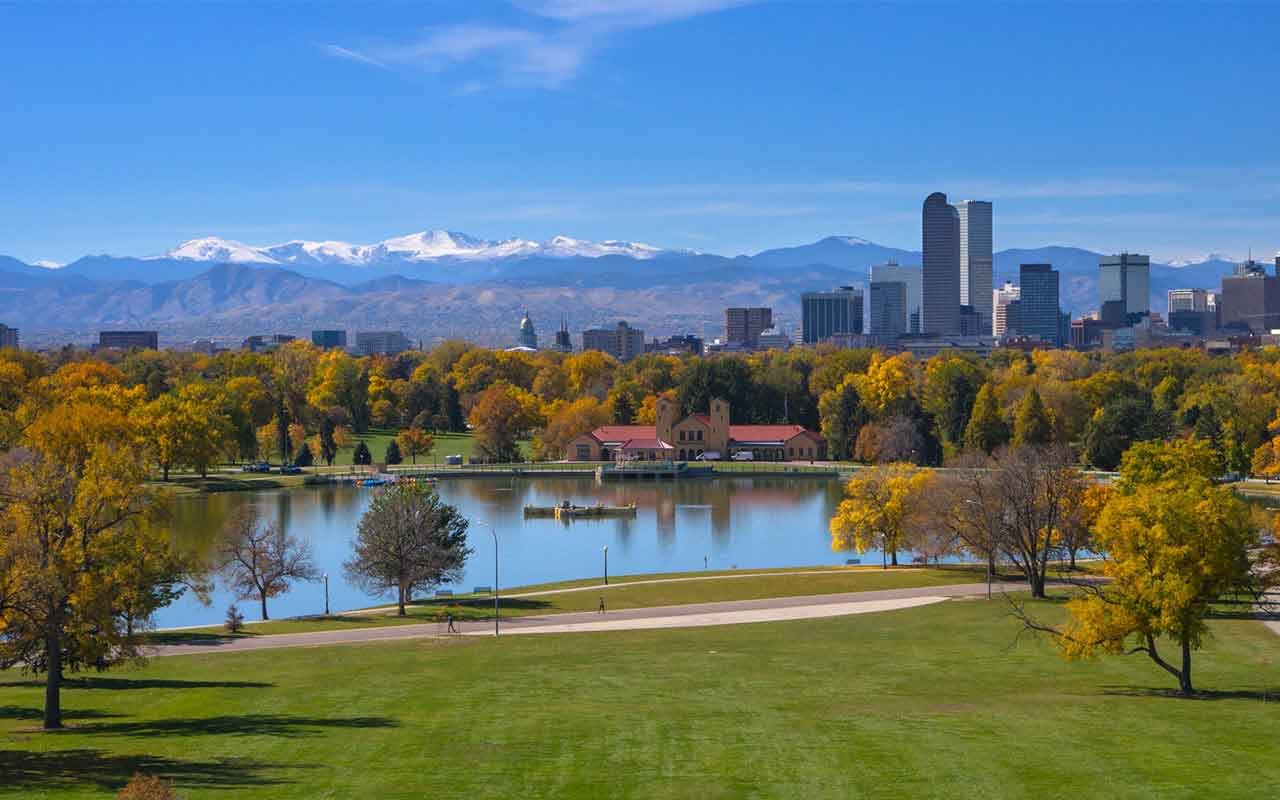
Denver
- City population: 678,467
- Share of population 65+: 11.2%
- Cost of living for retirees: 9.4% above the national average
- Average income for population 65+: $59,601
- Community score: 63.4
- State's tax rating for retirees: Mixed
Colorado ranks fifth in the United Health Foundation's senior health rankings, and Denver plays a healthy role in that rating. Indeed, the Milken Institute, a think tank, ranked the metro area the 12th best big city for successful aging in large part due to Denver’s healthy and active senior population.
Other strengths of the area include high employment and economic stability, as well as quality infrastructure, with well-funded transit for older adults, highly rated nursing homes and ample continuing care. Indeed, the Denver metro area is home to more than 24 health care facilities per 1,000 seniors, compared with just about 19 per 1,000 seniors in the U.S.
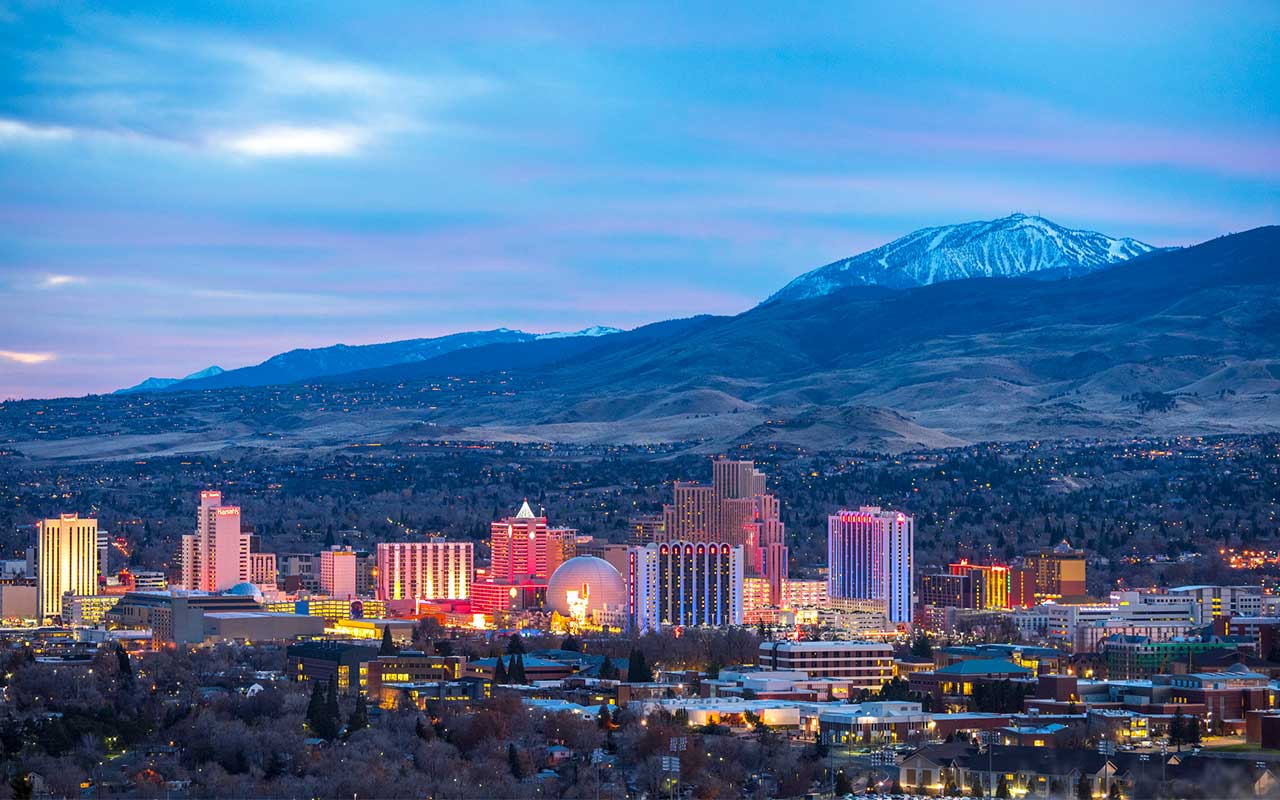
Reno, Nev.
- City population: 239,732
- Share of population 65+: 13.8%
- Cost of living for retirees: 10.4% above the national average
- Average income for population 65+: $51,061
- Community score: 61.2
- State's tax rating for retirees: Most Tax Friendly
Whether or not you like to gamble, retiring to Reno can make you feel like you've hit the jackpot. Boasting a small-town feel with big-city amenities, the locale proclaims itself "The Biggest Little City in the World." And it backs up the claim, offering a downtown full of restaurants, nightclubs, art galleries and music venues, on top of its well-known casinos.
Outdoor enthusiasts also win. The nearby Sierra Nevada mountain range and Lake Tahoe provide ample opportunities for hiking, biking and boating in warm weather, and skiing in winter. The area's resorts and marinas are also popular among residents of Gardnerville Ranchos, a small Nevada town near Lake Tahoe that's home to a surprising number of millionaires.
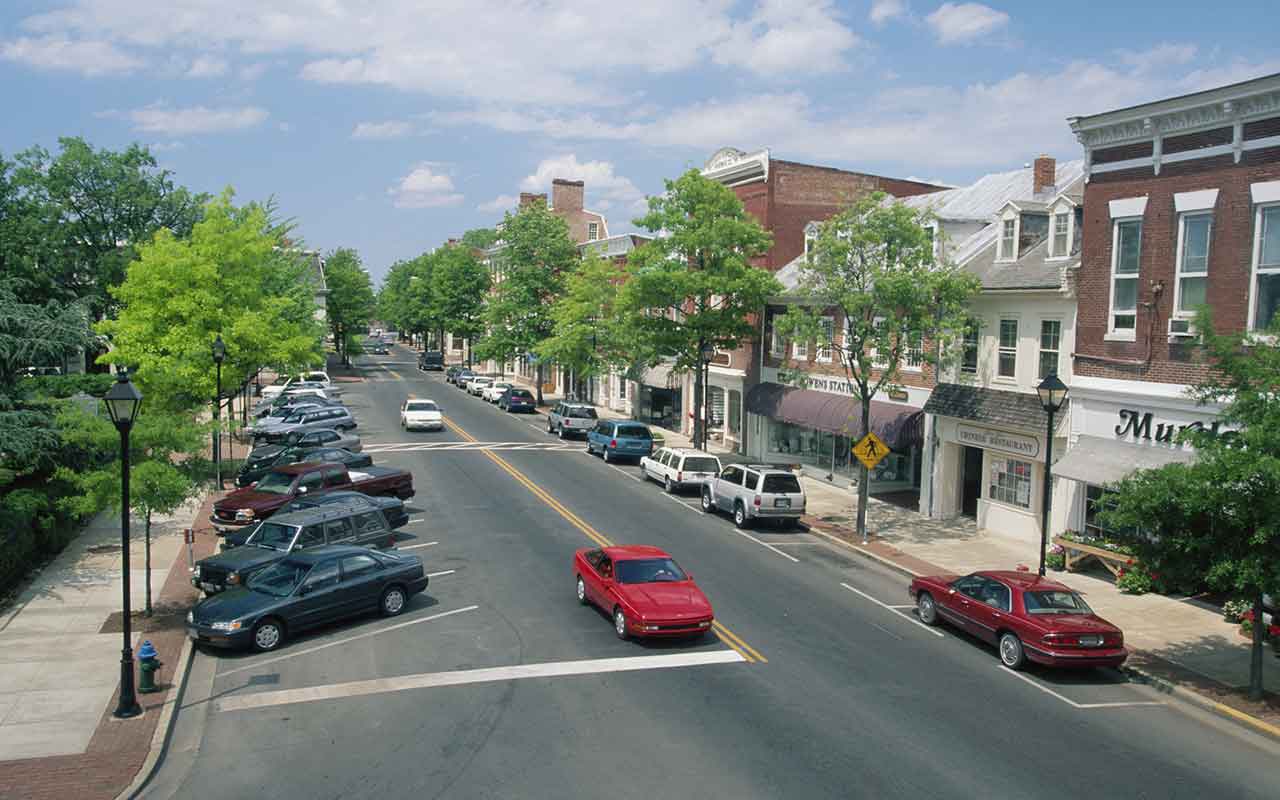
Easton, Md.
- City population: 16,606
- Share of population 65+: 23.5%
- Cost of living for retirees: n/a
- Average income for population 65+: n/a
- Community score: n/a
- State's tax rating for retirees: Least Tax Friendly
On the eastern shore of the Chesapeake Bay, this small town is packed with history, charm and senior residents. You can find a surprising number of eclectic dining options in town, as well as an array of boutique shops, art galleries and other cultural attractions. In fact, in July 2019, Easton was named one of two new Arts and Entertainment Districts in Maryland, joining the 26 existing Districts in the state in offering tax incentives to local artists and creative businesses. Qualifying developers and organizations will get a property tax abatement for artistic-related improvements to their buildings, and local artists can score a state income tax deduction for all art created and sold within the 110-acre district.
And you could use the extra opportunity to save. Maryland is, by and large, a wealthy area, home to a great number of millionaires, and the living costs reflect that. The cost of living for all residents in Easton is 13.8% above the national average, according to Sperling's BestPlaces, which makes it at least more affordable than Annapolis, on the opposite shore of the bay, where living costs are 41% above the national average. And water-loving retirees still have access to the same torrent of activities, such as kayaking, canoeing, boating and fishing, common on the Chesapeake Bay.

Burlington, Vt.
- City population: 42,453
- Share of population 65+: 10.7%
- Cost of living for retirees: 16.4% above the national average
- Average income for population 65+: n/a
- Community score: 64.2
- State's tax rating for retirees: Least Tax Friendly
This small mountain city on the shores of Lake Champlain is a picturesque setting for tree-hugging retirees. Outdoor recreation is plentiful with miles of hiking and biking paths, nearby beaches where you can swim, kayak or paddleboard in the warmer months, and numerous skiing options in the area. An eco-friendly vibe permeates the town, from the businesses bolstering the city's economy, such as household-products maker Seventh Generation, to the local food movement feeding the neighborhood.
But being green isn't easy on your wallet. Taxes and living costs are high. While the median home value is a low $206,000 in the Green Mountain State, compared with the median $229,000 for the U.S., it climbs to $326,500 in Burlington. A private room in a metro area nursing home costs a median $11,498 a month, compared with $8,365 a month for the U.S. At least you can save money on academic pursuits. The University of Vermont will cover tuition costs for state residents age 65 and older who wish to take a class, even if it's for credit.

Portland, Maine
- City population: 66,715
- Share of population 65+: 13.7%
- Cost of living for retirees: 17.1% above the national average
- Average income for population 65+: $44,769
- Community score: 65.8
- State's tax rating for retirees: Mixed
The largest city in Maine, Portland offers a lively downtown and plenty of urban-esque amenities amidst the great outdoors of the Pine Tree State. You can enjoy museums, theaters and an array of eclectic dining. The flagship L.L. Bean store in nearby Freeport is a must-see for many visitors, but resident shoppers also flock to Portland’s unique boutiques and outlets.
All the while, you’re never too far from the area's many beaches. That means ample opportunity to lounge on the shore or dive into water-based activities including fishing, kayaking, sailing and even surfing. And of course, hiking and biking trails abound—perfect in the (much) colder months, too, for cross-country skiing and snowshoeing.
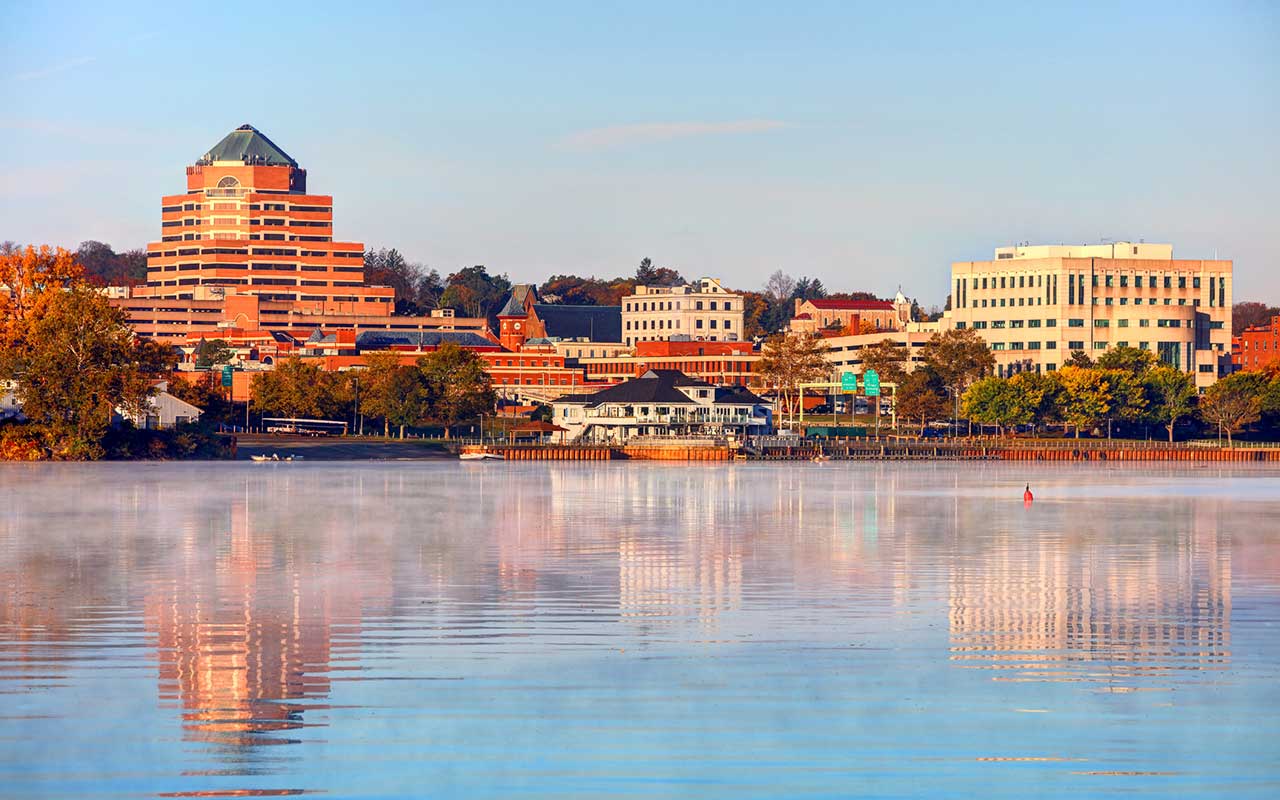
Middletown, Conn.
- City population: 46,747
- Share of population 65+: 14.4%
- Cost of living for retirees: 19.2% above the national average*
- Average income for population 65+: n/a
- Community score: 59.8*
- State's tax rating for retirees: Least Tax Friendly
Like much of the Northeast, Connecticut is known to be a high-cost area, and Middletown is no exception. But the Hartford metro area, of which Middletown is a part, is at least more affordable than other major metro areas in the state, including Stamford and New Haven, according to the Council for Community and Economic Research. And local residents tend to pull in high enough incomes to make it work. The city's average income for all households is $90,977 a year, and it's even better for the older population with incomes for residents age 60 and up averaging $92,851 a year.
Plus, being home to Wesleyan University, Middletown offers all the benefits of retiring to a college town, including numerous restaurants, shops and cultural attractions. You can also take advantage of the Wesleyan Institute for Lifelong Learning, which offers no-credit courses, lectures and other educational opportunities at minimal cost and is open to the entire community. And while the nearby city of Hartford has an alarmingly high crime rate—with 1,093.8 violent crimes per 100,000 residents reported, compared with the national rate of 473.2 for cities of similar size—Middletown is far safer with a mere 49 violent crimes total reported for the year.
*Data for the Hartford metropolitan statistical area, which includes Middletown.

Corvallis, Ore.
- City population: 56,224
- Share of population 65+: 11.5%
- Cost of living for retirees: n/a
- Average income for population 65+: n/a
- Community score: n/a
- State's tax rating for retirees: Not Tax Friendly
The small city of Corvallis, located about 85 miles south of popular Portland, offers a similarly laidback lifestyle, but with smaller crowds and relatively lower costs. The overall cost of living is 19.8% above the national average—still pricey to be sure, but much more affordable than Portland's living costs at 47.8% above average. And average incomes are comparable at $68,589 a year in Corvallis and $68,125 in Portland for all residents.
Beyond financials, the area has plenty to recommend itself. You can enjoy the great outdoors, hiking or biking along the more than 60 miles of surrounding trails, observing the local wildlife, or taking advantage of nearby fishing, kayaking and swimming spots. You can also indulge in the more intoxicating offerings of the area. Coravllis is home to more than a dozen wineries—naturally, being in the heart of the Willamette Valley—as well as four craft distillers for whiskey, vodka and more and six breweries right in town.
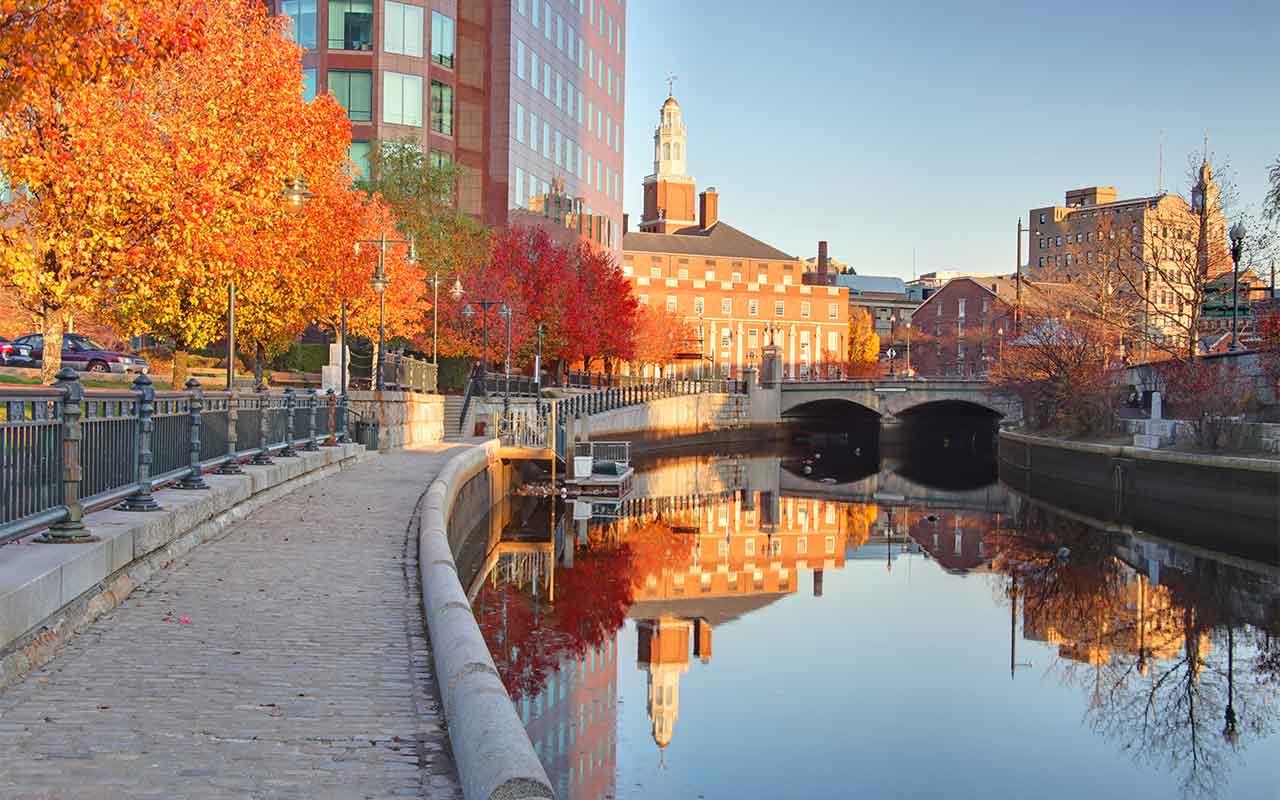
Providence, R.I.
- City population: 179,509
- Share of population 65+: 9.6%
- Cost of living for retirees: 21.9% above the national average
- Average income for population 65+: $64,657
- Community score: 59.3
- State's tax rating for retirees: Not Tax Friendly
Home to Ivy League Brown University and the world-renowned Rhode Island School of Design, as well as a handful of other colleges, Providence can be a great fit for retired intellectuals and artists. They'll have no shortage of things to do, with the schools offering gallery nights, performing arts events, educational opportunities and more. And the schools' presence has helped draw a variety of restaurants and businesses to the area, too.
Unfortunately, living costs and an unfriendly tax environment can be prohibitive throughout the tiny state, and Providence is no exception.
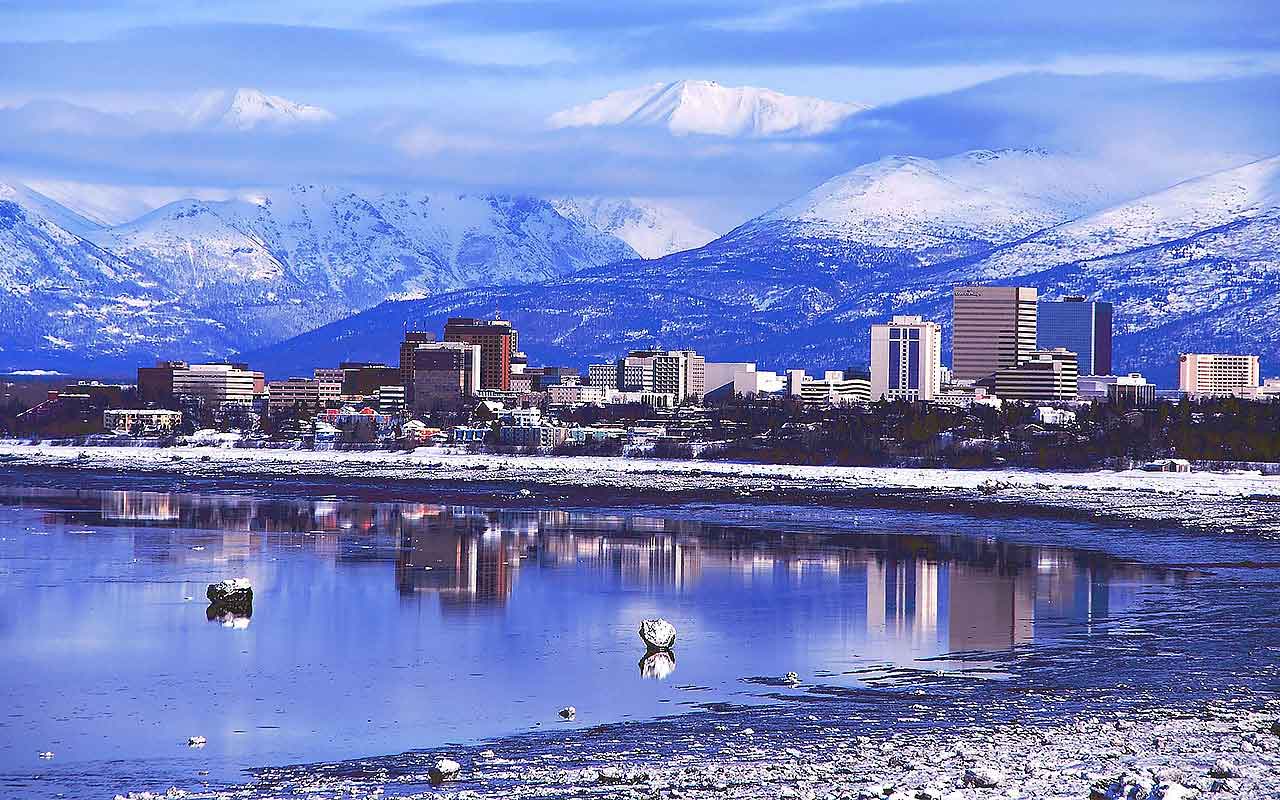
Anchorage, Alaska
- City population: 298,225
- Share of population 65+: 9.4%
- Cost of living for retirees: 26.8% above the national average
- Average income for population 65+: $70,291
- Community score: 62.1
- State's tax rating for retirees: Most Tax Friendly
Older folks don't seem too interested in facing the Last Frontier in retirement. Only 10.1% of the entire state's population is age 65 and up compared with 14.9% of the whole U.S. But if you crave adventure—and don't mind long winters and vast swaths of wilderness—it pays to live in Alaska. Literally. A state fund fueled by oil wealth gives all permanent residents an annual dividend. In 2018, the payment was $1,600 per person.
And residents could certainly use the extra cash. Living costs throughout Alaska are significantly higher than is typical across the continental U.S. But Anchorage is the least expensive metro area in the state, according to the Council for Community and Economic Research. Plus, being the largest city in Alaska, it offers more amenities including numerous theaters, museums and shopping centers, on top of all the outdoor recreation you'd expect. It also has an abundance of health care facilities, more than 41 establishments per 1,000 seniors in the metro area compared with just about 19 per 1,000 seniors in the U.S.
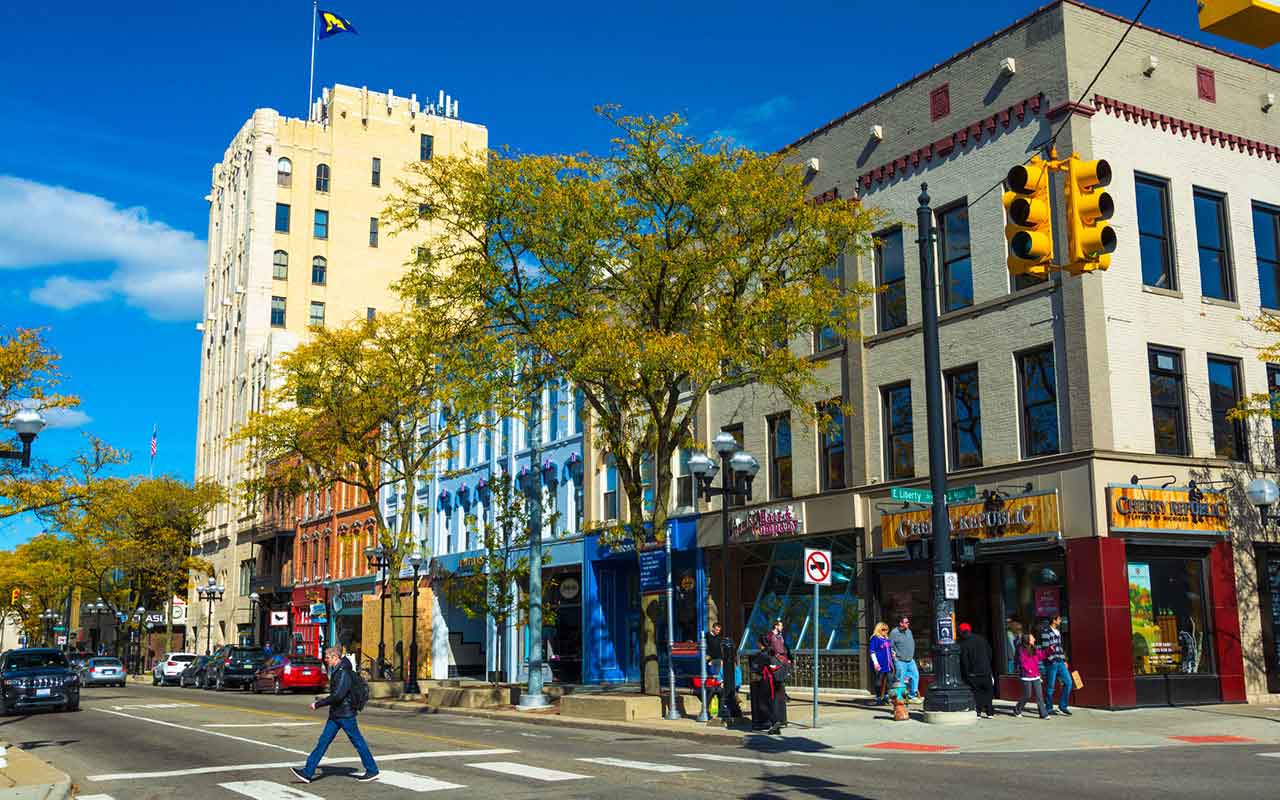
Ann Arbor, Mich.
- City population: 119,303
- Share of population 65+: 11.3%
- Cost of living for retirees: n/a
- Average income for population 65+: $82,971
- Community score: 66.3
- State's tax rating for retirees: Not Tax Friendly
Another college town well suited to retirees, Ann Arbor is home to the University of Michigan with all its educational programs (including the Osher Lifelong Learning Institute), sporting events and cultural affairs. The university also runs the Geriatrics Center & Institute of Gerontology, which focuses on health care issues that come with aging. Along with its research facilities, medical facilities and staff, the Center offers programs and classes to help older adults maximize their good health and independence.
In fact, Ann Arbor's health care facilities are top-notch, helping to earn it a sixth-place ranking among small metro areas for successful aging, according to the Milken Institute. The area's public transportation options are another noted winning attribute for older residents. A downside, however, is affordability. Overall living costs are 27.1% above the national average, according to Sperling's BestPlaces, and the median home value is $378,600, versus just $153,000 for the rest of the state, according to Zillow.

Hilo, Hawaii
- City population: 45,703
- Share of population 65+: 18.5%
- Cost of living for retirees: n/a
- Average income for population 65+: $54,503
- Community score: n/a
- State's tax rating for retirees: Tax Friendly
Hawaii is well known for its beautiful beaches, enviable climate and high prices. In Hilo, on the Big Island, the overall cost of living is 36.4% above the national average, according to Sperling's BestPlaces. But at least that's more affordable than capital city Honolulu, on Oahu, where living costs are a steep 101.1% above the national average. The median home value in Hilo is $339,800, according to Zillow—still pricey, to be sure, compared with the U.S. median of $229,000, but much more reasonable than the $676,100 median in Honolulu.
And the local lifestyle is still priceless. The colonial town's mood is quiet and calm, but its location on the eastern coast of the island and near active volcano Mauna Loa offers plenty of opportunities for adventure. You can explore rainforests and waterfalls, as well as Hawaii Volcanoes National Park. In the downtown and waterfront areas, enjoy galleries, shops, restaurants and museums, including the 'Imiloa Astronomy Center.
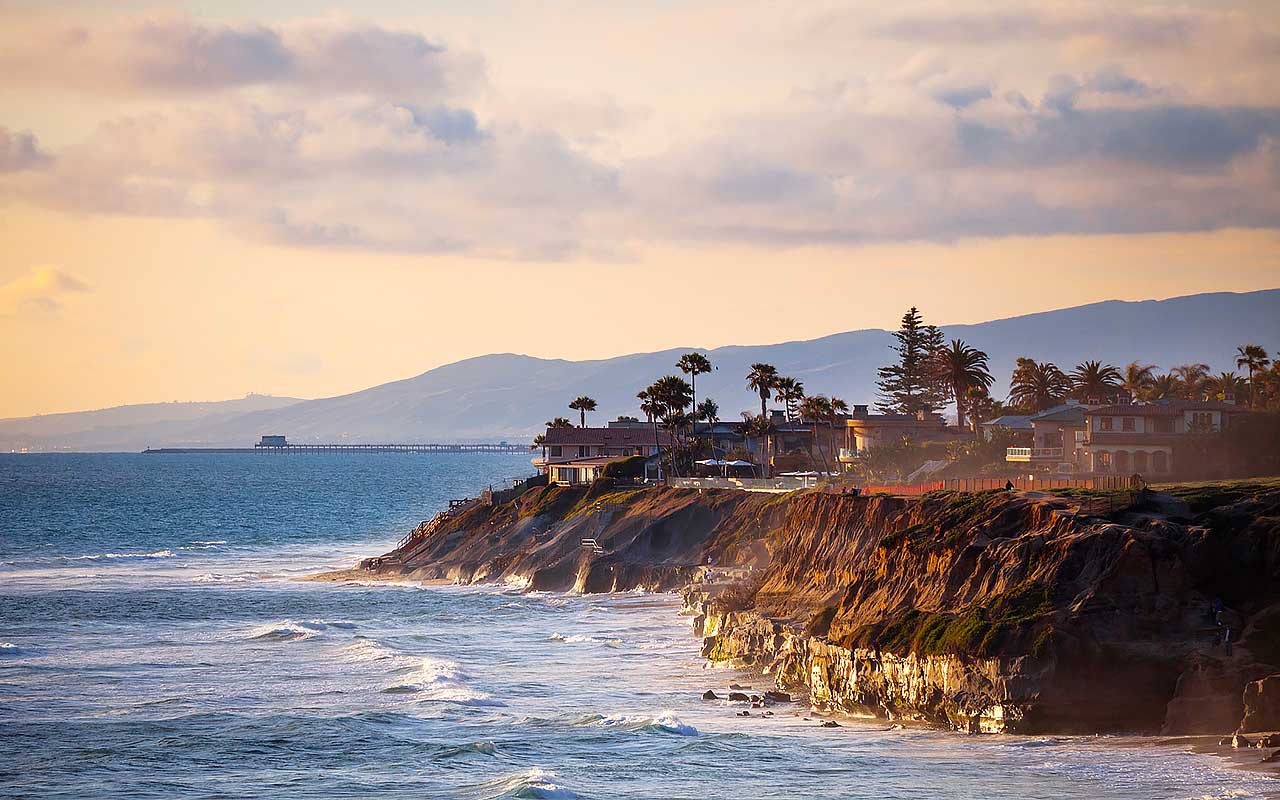
Carlsbad, Calif.
- City population: 113,147
- Share of population 65+: 16.0%
- Cost of living for retirees: 40.6% above the national average
- Average income for population 65+: $70,348
- Community score: 64.3
- State's tax rating for retirees: Mixed
Part of the San Diego metro area, Carlsbad offers a small-city feel with easy access to big-city amenities alongside seven miles of Pacific Ocean coastline. You can also find 40 parks and more than 50 miles of hiking trails, including the variety of options covering the Rancho La Costa Preserve's Denk Tank Mountain, the highest point in Carlsbad. The city offers a full calendar of artsy offerings, too, including Foreign Film Fridays in the spring and free concerts in the summer. Not that there are really seasons in Carlsbad: Throughout the year, average highs fall between 62 and 71 degrees Fahrenheit, and average lows only go down to between 45 and 64 degrees Fahrenheit, according to Weather.com. And rainy days are rare. Plus, you can choose among a host of retirement communities with ocean views.
Of course, you have to be able to afford it. Like much of California—where living costs are 69% above the national average, making it the second-most expensive state in the country behind only Hawaii—Carlsbad and the whole metro area is a pricey place to live. For example, the median home value in the U.S. is $229,000, according to Zillow; in California, it's $548,600; and in Carlsbad, it's (brace yourself) $860,700. And taxes throughout Cali also weigh heavily on your wallet.

Ocean City, N.J.
- City population: 11,328
- Share of population 65+: 29.3%
- Cost of living for retirees: n/a
- Average income for population 65+: n/a
- Community score: n/a
- State's tax rating for retirees: Mixed
The Garden State offers a number of appealing retirement destinations for those who can afford it. Ocean City is a particularly attractive spot, evidenced by the high share of seniors who have already chosen to reside there. Family-friendly beaches, a fun three-mile boardwalk and proximity to Atlantic City are notable draws.
But yes, it's going to cost you. Living costs and taxes are notoriously high all over Jersey. In Ocean City, the cost of living for all residents is a whopping 62.2% above the national average, according to Sperling's BestPlaces. And housing is particularly expensive with the median home value within city limits at a hefty $611,100, compared with $327,800 for the state and $229,000 for the U.S., according to Zillow. Plus, you have to budget extra for insurance to protect against possible storm and flood damage. Note, too, that Ocean City is a dry town, but you don't have to travel far to buy your booze.

How We Picked the 50 Best Places to Retire
To pinpoint one great retirement destination in each state, we weighed a number of factors:
- Cost of living for retirees for major metropolitan and micropolitan statistical areas, with data provided by the Council for Community and Economic Research, includes overall costs, housing, food and groceries, transportation, utilities, health care and miscellaneous expenses.
- Household incomes, poverty rates and number of health care facilities are from the U.S. Census Bureau.
- Community well-being and physical well-being scores are provided by digital health company Sharecare, in collaboration with Gallup. These are two of the five elements of well-being that make up the overall Gallup-Sharecare Well-Being Index. (The other three elements are purpose, social and financial well-being.) The index is calculated on a scale of 0 to 100 and based on more than 2.5 million nationally representative surveys. Community well-being is defined as "liking where you live, feeling safe and having pride in your community." Physical well-being is "having good health and enough energy to get things done daily." We display the community score for each place we chose.
- Population data, including the percentage of the population that is age 65 and older, is also provided by the Census Bureau. The figures are highlighted in these rankings for the benefit of readers, but were not factors in our methodology for ranking the best places to retire.
- Taxes on retirees, based on Kiplinger's Retiree Tax Map, which divides states into five categories: Most Tax Friendly, Tax Friendly, Mixed, Not Tax Friendly and Least Tax Friendly. This information is provided for the benefit of readers but was not factored into our selections within each state.
Get Kiplinger Today newsletter — free
Profit and prosper with the best of Kiplinger's advice on investing, taxes, retirement, personal finance and much more. Delivered daily. Enter your email in the box and click Sign Me Up.

Rapacon joined Kiplinger in October 2007 as a reporter with Kiplinger's Personal Finance magazine and became an online editor for Kiplinger.com in June 2010. She previously served as editor of the "Starting Out" column, focusing on personal finance advice for people in their twenties and thirties.
Before joining Kiplinger, Rapacon worked as a senior research associate at b2b publishing house Judy Diamond Associates. She holds a B.A. degree in English from the George Washington University.
-
 Stock Market Today: Trump Retreats, Markets Rejoice
Stock Market Today: Trump Retreats, Markets RejoiceStocks rally, yields soften, the dollar rises, and even beaten-down names enjoy the wages of potential trade peace.
By David Dittman
-
 In Trump’s Economy Should 401(k) Savers 'Set It and Forget It?'
In Trump’s Economy Should 401(k) Savers 'Set It and Forget It?'It’s hard to bury your head in the sand when the markets are volatile. Here’s when it makes sense and when it doesn’t.
By Donna Fuscaldo
-
 What to Do With Your Tax Refund: 6 Ways to Bring Growth
What to Do With Your Tax Refund: 6 Ways to Bring GrowthUse your 2024 tax refund to boost short-term or long-term financial goals by putting it in one of these six places.
By Rachael Green
-
 What Does Medicare Not Cover? Eight Things You Should Know
What Does Medicare Not Cover? Eight Things You Should KnowHealthy Living on a Budget Medicare Part A and Part B leave gaps in your healthcare coverage. But Medicare Advantage has problems, too.
By Donna LeValley
-
 12 Great Places to Retire in the Midwest
12 Great Places to Retire in the MidwestPlaces to live Here are our retirement picks in the 12 midwestern states.
By Stacy Rapacon
-
 10 Cheapest Small Towns to Live In
10 Cheapest Small Towns to Live InThe cheapest small towns might not be for everyone, but their charms can make them the best places to live for plenty of folks.
By Dan Burrows
-
 15 Reasons You'll Regret an RV in Retirement
15 Reasons You'll Regret an RV in RetirementMaking Your Money Last Here's why you might regret an RV in retirement. RV-savvy retirees talk about the downsides of spending retirement in a motorhome, travel trailer, fifth wheel or other recreational vehicle.
By Bob Niedt
-
 The Cheapest Places To Retire in the US
The Cheapest Places To Retire in the USWhen you're trying to balance a fixed income with an enjoyable retirement, cost of living is a crucial factor to consider.
By Stacy Rapacon
-
 The Six Best Places to Retire in New England
The Six Best Places to Retire in New Englandplaces to live Thinking about a move to New England for retirement? Here are the best places to land for quality of life, affordability and other criteria.
By Stacy Rapacon
-
 13 Smart Estate Planning Moves
13 Smart Estate Planning Movesretirement Follow this estate planning checklist for you (and your heirs) to hold on to more of your hard-earned money.
By Janet Kidd Stewart
